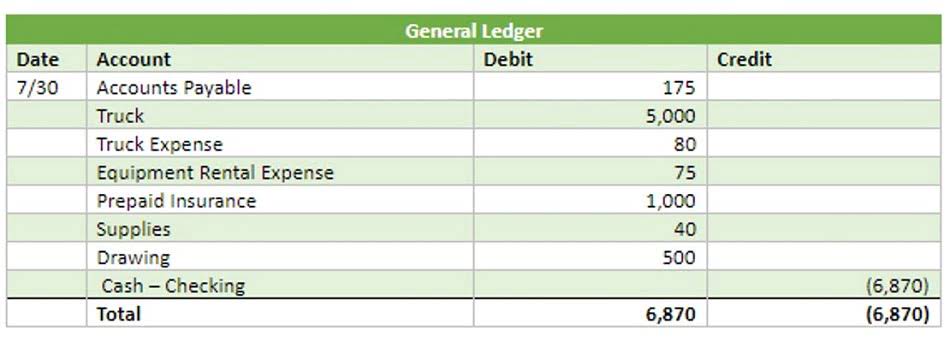
Exercise multi-scenario analyses to hone your response to changing cost structures and achieve the most economically sound decisions. This straightforward analysis shows that the special order would enhance overall profit without complex recalibrations of existing operations. Such calculations help you make an informed choice about whether to proceed with increased production. Explore the world’s smartest marketing attribution solution for optimizing your ad spend to maximize ROAS and revenue.
Key terms of incremental sales

As we delve into the nuanced realm of Incremental Innovation, it’s essential to recognize its manifold benefits. The concept of “incremental” resonates throughout this strategic paradigm, encompassing incremental change, incremental improvement, and a commitment to a gradual yet consistent evolution. The main focus is on small improvements to a company’s existing products, services, processes, new technology, and business models. By focusing on the gradual evolution of current offerings, companies employing incremental innovation aim to stay incremental cost at the forefront of their industries.
- Once the expected sales and actual sales have been determined, businesses can use the incremental sales formula to calculate the additional revenue generated by the promotional activity or marketing campaign.
- An illustrative example of incremental sales could involve a retail company launching a targeted email marketing campaign to promote a new product line.
- While it appeared in the first instance that the order will result in a loss of Rs. 1,000, it now appears that it will lead to an addition of 1,500$ (5,000$- 3,500$) to profit.
- For example, if a company decides to increase its production of a product by 500 units, the incremental revenue would be the revenue generated by selling those 500 additional units.
- It is crucial for marketers to grasp and measure incrementality to optimize media spending and boost ROI effectively.
You Want To Drive Change?

Although the results may not produce dramatic effects immediately, they will be long lasting. And the accumulation of numerous small improvements is often as powerful, or even more powerful, than attempts at making huge leaps. Incremental marketing is measured by customer increases (or decreases) in key metrics like website conversions, unique visitors, spending changes in existing customers, returning customers and of course, bottom-line sales. Each step of the marketing campaign is measured as its own campaign which is later compared to the success of the campaign as a whole.

The benefits of preferring incremental change
Observe how changes in assumptions directly influence outcomes in incremental analysis. Such advanced techniques provide more robust insights into potential profitability under varying scenarios, assisting in forming resilient business strategies. Ensures that decisions are made with profitability in mind, maximizing returns from investments or operational changes.
- The main goal of an incremental development process is to keep the existing business model largely unchanged.
- Incremental sales refer to the additional revenue generated from new or existing customers as a direct result of specific marketing initiatives, promotional campaigns, or other strategic efforts.
- Compliance with labor laws, such as the FLSA in the U.S., may introduce additional costs related to benefits, workers’ compensation, or mandatory overtime pay.
- Ensure your sales and marketing teams are aligned on goals, messaging, and campaign timing.
- As we’ve already seen, for example, baseline sales estimates rely heavily on best guesses derived from historical data.
Transportation costs may increase due to expedited shipping or additional warehousing needs. Beyond direct costs, businesses must account for increases in overhead expenses such as utilities, maintenance, and equipment depreciation. If a manufacturing facility operates longer hours, electricity and water usage will rise. Identify how many units must be sold at various pricing strategies to cover costs, essential for complete financial viability analysis.

How can businesses track incremental sales effectively?
There are various types of incremental change, each with its characteristics and implications. Incrementality in marketing refers to the lift or increase in the desired outcome (e.g., awareness, web visits, conversions, revenue, profitability) provided by marketing activity. Essentially, it helps us determine the true incremental contribution of paid media at the channel, tactic, campaign, or ad set level. This is especially crucial for channels where user-level ad impressions are AI in Accounting difficult to map and measure, such as “walled garden” social channels like Facebook, Snap, and Pinterest, or even TV and direct mail. While it appeared in the first instance that the order will result in a loss of Rs. 1,000, it now appears that it will lead to an addition of 1,500$ (5,000$- 3,500$) to profit.
- By leveraging specific KPIs, businesses can optimize their strategies for sustainable revenue growth and increased profitability.
- This approach allows teams to receive continuous feedback and make necessary adjustments throughout the project life cycle.
- The campaign drove $20,000 in incremental revenue, showing how the marketing strategy boosted sales volume and customer acquisition.
- You would have only seen $7,000 in incremental sales, meaning that PPC strategy essentially lost you $3,000.
Tips to drive incremental sales
If you’re not already set up to track sales revenue over dedicated periods of time, you may want to take care of that first by adopting a versatile CRM software like Pipedrive. Armed with this chart, you can now move on to calculating your incremental sales figure. One aspect that companies must be aware of is the potential for cost assumptions to be wrong. Every effort must be made to make correct cost estimates so that the choice of an opportunity that a business ultimately makes doesn’t affect the company negatively. However, the $50 of allocated fixed overhead costs are a sunk cost and are already spent.

resources
Upselling is a powerful strategy adjusting entries for generating incremental sales by encouraging customers to upgrade their purchases. When executed correctly, upselling can lead to increased revenue and improved customer satisfaction. By offering customers a more advanced version of the product they are purchasing, businesses can tap into additional sales opportunities that may have otherwise gone untapped. This can be especially effective when the higher-priced option offers additional value to the customer, such as more features or a longer lifespan.
